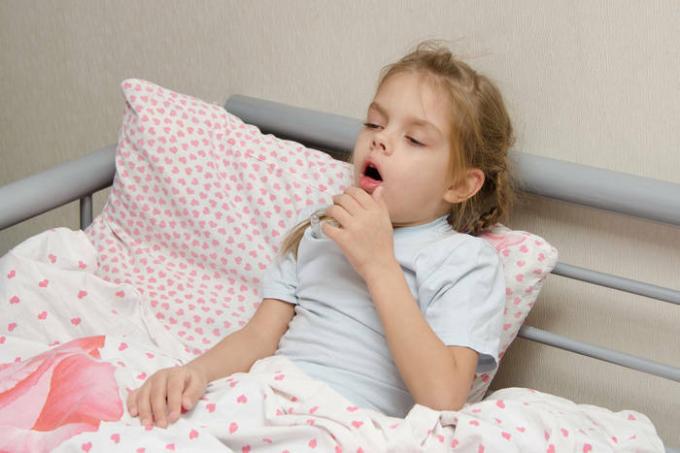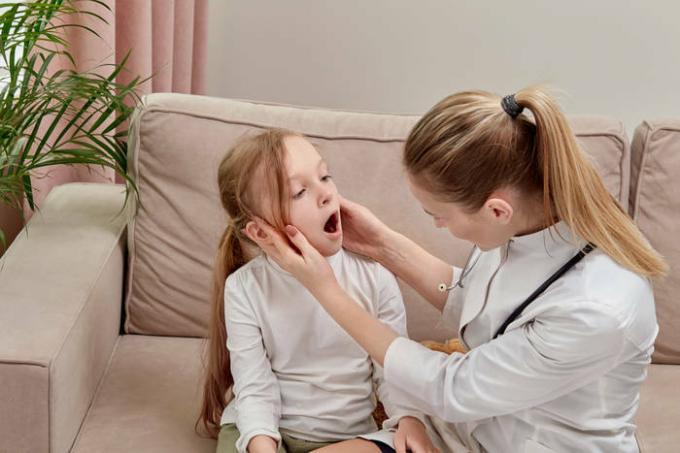How to relieve laryngeal edema and how to help a child before an ambulance arrives if it is difficult for him to breathe
One of the most unpleasant sores in preschoolers and children of primary school age is laryngeal stenosis. People call it false croup. The first attack of false croup can cause panic even in the calmest parents: for no apparent reason, the child begins to choke in the middle of the night. Not many people know how to behave in an emergency, when a child has difficulty breathing, before an ambulance arrives. Together with the head of the children's clinic "Suchasna Pediatrics Evidence" Sergey Makarov and a pediatrician Elena Rasic we figured out how to recognize the approach of stenosis and control this process.
How does false croup begin
False croup is not a separate disease, but a complication from certain diseases. Most often it is caused by the parainfluenza virus, certain strains of influenza and adenovirus. During the acute course of the disease, the child begins laryngitis. This is the main harbinger of stenosis.
The characteristic symptoms of laryngitis should keep parents alert. “The virus infects the vocal cords. This leads to hoarseness and sometimes to complete loss of voice. During the day, the child is disturbed by a very typical, dry and rough cough, which is also called barking. By the evening the cough gets worse, ”Elena Rasich lists.

False croup begins with laryngitis and barking cough / istockphoto.com
It happens that laryngitis is only limited to this. But there are children prone to developing laryngeal edema, who develop stenosis. “A change in the child’s breathing, which is manifested by a noisy inhalation, should be a wake-up call for parents,” emphasizes Sergey Makarov. - At first, a noisy breath is heard only during activity, when the child is moving or crying. When the swelling increases, the obstacle to normal breathing increases and the noisy breath can be heard even at rest. ”
What to do if your child has difficulty breathing
Difficulty breathing in the background of a hoarse voice and barking cough almost always means that the child has developed laryngeal stenosis. “Most often it happens late at night, and parents immediately panic,” warns Sergei Makarov. - You can't do that. Hustle and bustle and panic will only scare the child. He will start screaming, because of the screaming, the swelling will increase even more. Therefore, by any means we calm down ourselves and we calm the baby. If parents have not yet experienced such attacks, you need to call an ambulance. Any breathing disorder requires immediate medical attention. "

During an attack, do not panic so that the child does not get scared and start screaming / istockphoto.com
Before an ambulance arrives, a child needs rest and access to cool, fresh air. Wrap it up in a blanket and bring it to the window, take it out to the balcony, take it out into the street. If this is not possible, then you can even bring the child to an open freezer. It is important that the air is cool. “Cold relieves swelling well,” explains Sergey Makarov. - Previously, for stenosis, doctors recommended a hot bath and humid moist warm air. Studies have shown that this measure does not in any way alleviate the condition of the child. "
Sometimes access to cool air helps the baby. But most often it is necessary to relieve laryngeal edema with decongestants. As a rule, this is an injection with a steroid hormonal drug, which the ambulance team has. “If the child has already had stenosis, and the parents are familiar with this situation, they can use inhaled steroids themselves with a nebulizer. Also, these drugs are dispensed in the form of a rectal suppository. The dosage should be adjusted by the pediatrician. It is important to remember that if the swelling does not subside in 20-30 minutes after the measures taken, you need to call an ambulance, ”insists Elena Rasich.
How to prevent laryngeal edema
If the symptoms are present and parents already understand that an attack will occur at night, it is important to remain calm and in control of the situation. “We give the child a warm drink, for example, tea with mint or chamomile,” recommends Elena Rasich. - We go out before going to bed in the air, in parallel we ventilate and humidify the room. You can give the baby valerian in advance, it will have a mild sedative effect. "

If you are expecting a new attack, give your child tea and go out with him / istockphoto.com
You don't need to stuff your child with extra pills. Neither antispasmodics nor antiallergic drugs will help with stenosis. But mucolytics with false croup can even harm: increased sputum discharge even more clogs the larynx lumen. “Only cold and steroids have a real effect,” notes Sergey Makarov. - We remove the swelling and continue to treat the disease as usual ARVI. Sometimes the attack of stenosis is repeated the next night, then the steroids are re-injected. But more often than not, once is enough to remove this complication. "
How to distinguish a false croup from a dangerous disease
Laryngeal stenosis is a specific complication. Those who have encountered it once will unmistakably guess it again. However, it can be confused with another, much more dangerous disease. This is epiglottitis, an inflammation of the cartilage of the larynx, which obstructs the entrance to the airways when food is swallowed. Often it is he who is confused with a false croup and they begin to treat the child incorrectly.
What is the difference between epiglottitis? “If during stenosis the state of health is slightly disturbed and the temperature, as a rule, is not high, during epiglottitis it is fever, feeling unwell, severe intoxication. Laryngeal stenosis is not characterized by intense sore throat. With epiglottitis, the pain is so strong that the child often cannot even swallow saliva, it simply flows out. In addition, a child with epiglottitis has a more pronounced noisy breath, but there may not be a hoarse voice. Sometimes, during epiglottitis, the child takes a specific position: bends forward and throws his head back: in this position, the child breathes a little easier, ”explains Sergey Makarov.

Do not look at the throat with a spatula if a child has epiglottitis / istockphoto.com
If these symptoms are present, this is a good reason to suspect epiglottitis. Such a child requires immediate medical advice. “Warn the ambulance crew about your suspicion, because during epiglottitis, in no case should you look at the throat with a spatula. Due to the examination with a spatula, the entrance to the larynx can generally "jam" and the child will simply die, "emphasizes Makarov.
You will also be interested in reading:
How to recognize a disease by the type of cough
Complications of ARVI in children - 7 important facts
Child health: everything you wanted to know about the flu

